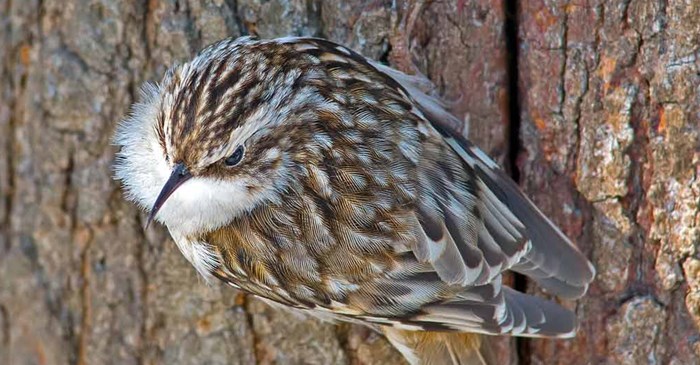Some of our most popular songbirds don bright colors and bold patterns. Still, many others blend into or match their surroundings by design, and though they don't generate the same level of excitement, there's plenty to appreciate about their mottled, streaky appearances.
Here's a look at how backyard birds deploy camouflage to hide in plain sight.
Nesting females
Why is it that for many colorful and showy males, the female is so plain? The scientific term of this distinction is sexually dimorphic, and the reason for the difference is that it often falls to the female to incubate the eggs. Subdued or even the mottled coloring makes them less visible to predators. For example, male Painted Buntings are an inspiration of color. In contrast, the females are yellow and green, perfect for blending in with the tree canopy.
Juveniles
When young birds fledge and leave the nest, many species don’t look quite like their parents. In many breeds, flight feathers are still growing in, plus they’re still learning fundamental bird behavior. Because fledglings spend much of their time on the ground, with lesser abilities to flee from predators, their youthful plumage helps them hide in place.
Ground foragers
These birds spend much of their time searching for food in low-lying shrubs and on the ground. Some examples:
- Fox Sparrow: Like many sparrow species, their streaky brown feathers help them blend right into the leaf litter on a forest floor.
- Eastern Towhee: Their black, brown and orange plumage makes them almost invisible when they’re foraging and nesting under dense shrubbery.
- Brown Thrasher: These brown speckled birds can be challenging to spot. If you get too close to a thrasher’s nest, she’ll drop to the ground and scoot into shrubs, a tangle of vines, or some other dense cover.
Arboreal birds
These are birds that forage for food on and up in the trees. Some examples:
- Brown Creeper: These woodland birds hop up, down and around tree trunks, probing their long bills into bark crevices to pull out insects and spiders.
- Black-capped Chickadee: Their jet-black heads provide a shadowy cover as they peek out from the tree holes (or nesting boxes), where they do their nesting and roosting.
- Brown-headed Nuthatch: These cute brown and grey birds spend their days high up in the pine trees, with almost uncanny abilities to hop vertically and upside down.
The best strategy to locate a bird wearing a camo print is to learn their calls and songs, and then watch for them flying in for a landing at your backyard bird feeders. If you love birds, but hate the mess, Lyric Delite Mix makes the problem disappear. With no shells and no waste, this low-maintenance mix offers great value without sacrificing the high quality.
